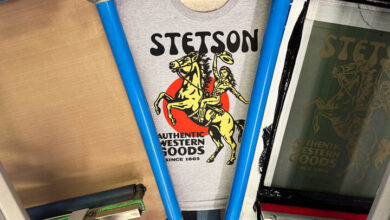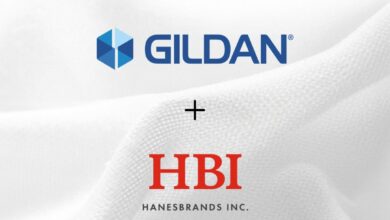Screen printing has been on its deathbed once already! When I look at screen printing today, all of the cliche phrases apply. One man’s trash is another man’s treasure and out with the old in with the new come to mind. The truth is, everyone but the diehard screen-printing fans believe screen printing is dead once again. We could all look at current sales, bow our heads, and write the eulogy for the screen-printing funeral.
Hey, maybe they are all right. Or, maybe when everyone is running away headed towards DTF, it takes a rebel to run into the crowd and run straight to the press and stand on it yelling, “Hey, there’s still money to be made here!” In fact, I believe screen printing is still better suited for most.
I got on the internet in 2017 and said everyone should start with a heat press and I was crucified by the industry vets. Looking back, myself, alongside Supacolor Heat Transfers, ended the “iron on” stigma that has become the platform for DTF to shine bright. But, let’s go back to the original statement I said “Start with a heat press,” not “Only use a heat press.”
I am in part to blame for what we hear of about screen printing these days. And now I am here with my company, T-Shirt Side Hustle, alongside others like Ranar, Print Grip, GM Graphics, and GPX University to bring new life to screen printing. Making it innovative, relevant, fun, and most importantly easy for people to start, learn, and earn.
The truth is, it’s not about this method or that method; it’s all about what’s best for the individual job. Some jobs call for all the great things that DTF has brought to us, and some call for the classic features that screen printing provides. They’re all tools and your business needs all the tools to get the job done. Being able to screen print is about having control over your business with a reliable money-making tool that won’t fail you.

Fact: Every method has its pros & cons
When you solely rely on your heat press, you are at the mercy of your transfer printing company. As great as they all are, if they are perfect and do everything 100%, we are still at the mercy of the shipping companies who are still riding on the pandemic excuse and have yet to put any shipping guarantees back in place.
On the other hand, you may say you’re going to print my own transfers, not realizing that means you are now a transfer supplier. Even if you are only printing for yourself, you now are running two totally different businesses. I won’t even get into machine downtime. Sure, screen printing comes with a small learning curve and yes, it may also come with a little mess. But that’s no different than anything else we can expand into outside of heat pressing and just buying transfers. I’m not here to rip on any one method. We need them all. I am here, however, to tell you that screen printing belongs in any true print shop’s toolbox.
When it comes to having something tried-and-true, screen printing is exactly that. If you’re just starting out, having even a small single-color setup could boost your revenue and truly give you control over your business.
Screen printing should be a part of your everyday option for printing, depending on job specks. In a worst-case scenario, it should be your reliable backup plan. Leave the setup idle for five or so years and it will still operate like it did day one. Leave some machines idle for a week and spend a month trying to figure out what happened.
Real-life example
One of the last jobs I printed came in as a rush order at the end of the day on a Thursday. The guy needed 200 shirts with front and back print, printed one color for Sunday; meaning he basically needed them Saturday. So now let’s break this down.
I’ve got to get the shirts from SanMar, which is about 50 minutes away. I’ll hire a driver, no big deal.
Now, I automatically focused on screen printing — maybe five hours print time on the manual setup — but let’s say I didn’t have that as an option. I can’t do screen-printed transfers because the order won’t process until Friday, even if I could call and get it rushed because I know someone that knows someone (not likely). I definitely can’t count on a shipping company to overnight anything. That hasn’t worked since COVID, so it’s off the table.
Cool, I got a local guy that can print my DTF sheets. Two 12″ X 12″ prints per shirt and that’s about $8.64 at the 3 cents going rate today. That, plus the shirt, and my cost is getting up there. I can’t rely on outsourcing, either. While it costs less initially, the one-day turn is for sure going to be a 100% mark up.
But you know what, I do have my screen-printing setup. And by having that alone, even if I had to raise my prices to accommodate one of the other print methods, I could do the same price because of the turn time needed (in this case I added $500). My print cost is 30 cents, if I’m generous, for both sides and I still get to put more profit in my pocket.
To sum it up, every print method is a tool. We need them all. It’s about using the best tool to get the job done. Good marketing and high profit margin has often made DTF the go to, but we need to make sure our business success is the driving factor determining which what method we use.




